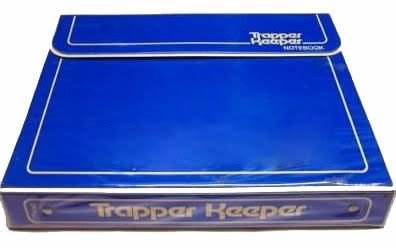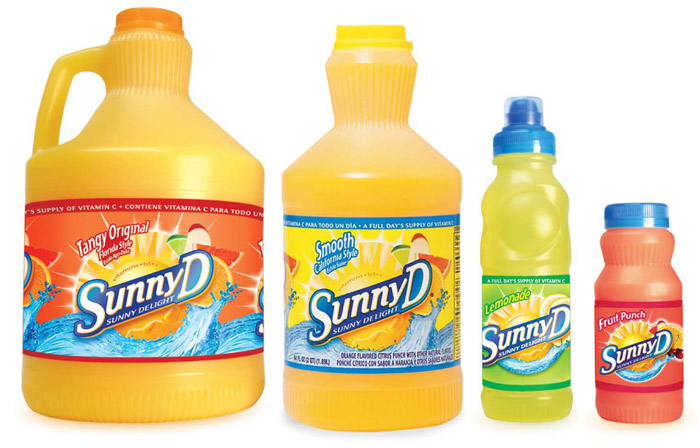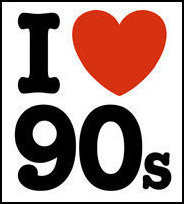
When you watch one of these commercials that is burned into everyone's brains for all eternity, you sort of have to wonder if the people hawking this ad campaign had even an inkling it would go quite so far. Did they know that I can not for the life of me remember how to solve a simple algebraic equation, but I can sing the entire 90s-era Mentos jingle from memory? Or perhaps that I would slowly but steadily forget the names of my former classmates and teachers, but would forever recognize that opening "doo-do-do-do-do-do-doo-waaah" with unwavering accuracy? God, I hope not. It's hard to fathom an ad agency with that level of thirst for absolute power over my dwindling available brainspace.
These guys were lucky they came before the days of fast-forwarding through blocks of quick-passing DVR-ed commercials. Nowadays, it's pretty unlikely many of us even know what commercials are on the air, let alone can recite them with startling astuteness from memory. Someday we'll tell our grandchildren of the days that advertisers weren't using cheap product-placement ploys to get to us but that we consciously absorbed information from a real live ad. They'll look at us blankly, we'll hum a few bars of a jingle for effect, and a generational gap will be had by all.
 Mentos commercials were the absolute campiest thing to come out of 90s TV advertising. Many may have assumed we left behind these lamely cheesy commercials in the 80s, but our brothers at Mentos stayed true to the corny tradition of hackneyed ad premises and embarrassingly light and fluffy background music. In some ways we'd like to believe that the good people at Mentos were offering us a sort of tongue-in-cheek, intentionally campy commercial, it's just as likely that they were totally and completely serious. What? Real people brandish a cylindrical roll of chewable mints when they get themselves out of a tough jam. Well, some people. I'm sure at least one person. Possibly.
Mentos commercials were the absolute campiest thing to come out of 90s TV advertising. Many may have assumed we left behind these lamely cheesy commercials in the 80s, but our brothers at Mentos stayed true to the corny tradition of hackneyed ad premises and embarrassingly light and fluffy background music. In some ways we'd like to believe that the good people at Mentos were offering us a sort of tongue-in-cheek, intentionally campy commercial, it's just as likely that they were totally and completely serious. What? Real people brandish a cylindrical roll of chewable mints when they get themselves out of a tough jam. Well, some people. I'm sure at least one person. Possibly.The Mentos commercials were something of a 90s phenomenon as the jingles had that uncanny ability to lodge themselves forever in our brains and play on a constant, unnerving loop. The commercials all featured the same basic skeletal plot outline with a few variances in character and setting. Typically, they involved a good-looking person facing a mildly inconvenient and potentially day-interrupting situation. Luckily for these fine folks, they've got the power of Mentos behind them, like in this classic take:
Wow, I honestly had no idea that you could simply repeat the same few words again and again in a rhythmic sequence and label it a fully-composed songs. The things I don't know, huh? I suppose these ads were all about the power of suggestion, and their reliance on repetition was supposed to reinforce those messages. Or maybe, more likely, to really, really get under our skin and keep us humming the tune all day long.
In case you failed to take good notes during the above video, here's a refresher course for the lyrics. Get it? Refresher? *Holds hands up to shield face from onslaught of reader-thrown tomatoes*. I can take a hint. Anyway, the words are:
'Doo doo doo doo, doo-doo, do-Wah!'
It doesn't matter what comes, fresh goes better in life, and Mentos is fresh and full of life.
Nothing gets to you, staying fresh staying cool, with Mentos, fresh and full of life.
Fresh goes better, Mentos freshness, fresh goes better with Mentos, fresh and full of life!
Mentos, the freshmaker!I'm sorry, what? how many times did you say fresh and/or full of life? By my count (not necessarily a reliable one, based on my suspect arithmetic skills) some variation of the word "fresh" comes up nine times. Nine times. The commercial's only 29 seconds long! That means nearly a third of the airtime is devoted to saying the word "fresh". Based on my complex algorithm equating a single word with one second, that is.
If the above ad's content didn't do it for you, don't you worry. They had plenty of other farfetched Mento MacGyvering fare to offer. Like this gem:
My favorite part of these commercials has got to be the incredible acting. Or miming, I suppose, considering the lack of verbal engagement. You have to love the way the jerk guy who parked behind her gives her that droll, "Oh, you!" look as the construction workers haul her car from its entrapment. He seems so mildly amused by the situation, as if it were a quickly resolved misunderstanding between friends rather than the more realistic road-rage induced maniacal behavior that inevitably leads to fake neck braces and gold-digging lawsuits in real life.
Or, if you prefer the jazzier remix version of the jingle, you can always go with this version of the ad:
Well, would you look at that! The lady is ingenious, I tell you. Ingenious. There's no way I could have thought of that in a stinky-breath moment. Thank God for Mentos, that's all I have to say.
If you're looking for more of a male-dreamboat featuring awesome Dawson hair and an open-front flannel shirt, then this one is definitely the way to go:
Okay, okay, I think you've got the idea. These commercials were incredibly formulaic yet remarkably successful. I suppose we all just wished the answer's to our everyday dilemmas could be so simple, or at least that we could handle them so breezily while underscored optimistically by doo-wop music.
A decade later, Mentos were back in the spotlight thanks to some enlightening viral video-ry showing us all the hidden danger of Mentos when dropped in soda. Apparently, there's something in the chemical reaction that causes a geyser-like effect, creating a dangerous pressure situation and a minty-fresh bottle rocket. Since I'm about as good at science as I am at math (that is to say, my knowledge extends no further than the notion that the earth is not trapezoidal) I'll let my good friends from MythBusters do the dirty work for me. Well, not so much dirty as sticky. And minty. Did I mention these things are fresh?
Don't try this at home, kids. Or, if you do, don't even think about telling your parents I told you to. A poor unpaid blogger like me can't afford a lawyer. Explosive chemical reactions aside, Mentos are notoriously chewy, minty, delicious, and they had a cameo in Clueless. Really, what much more could a 90s breath mint dream of?

































